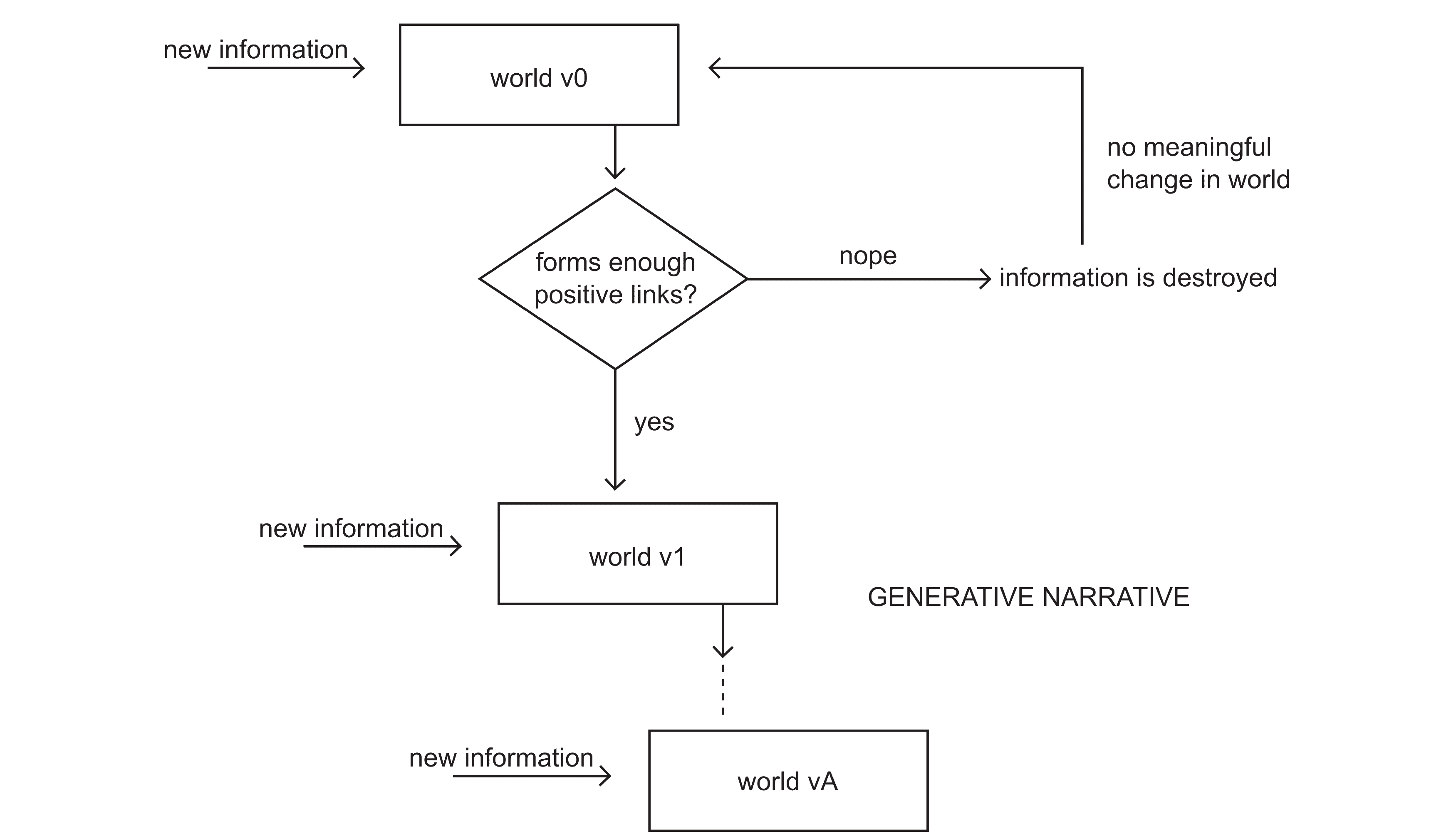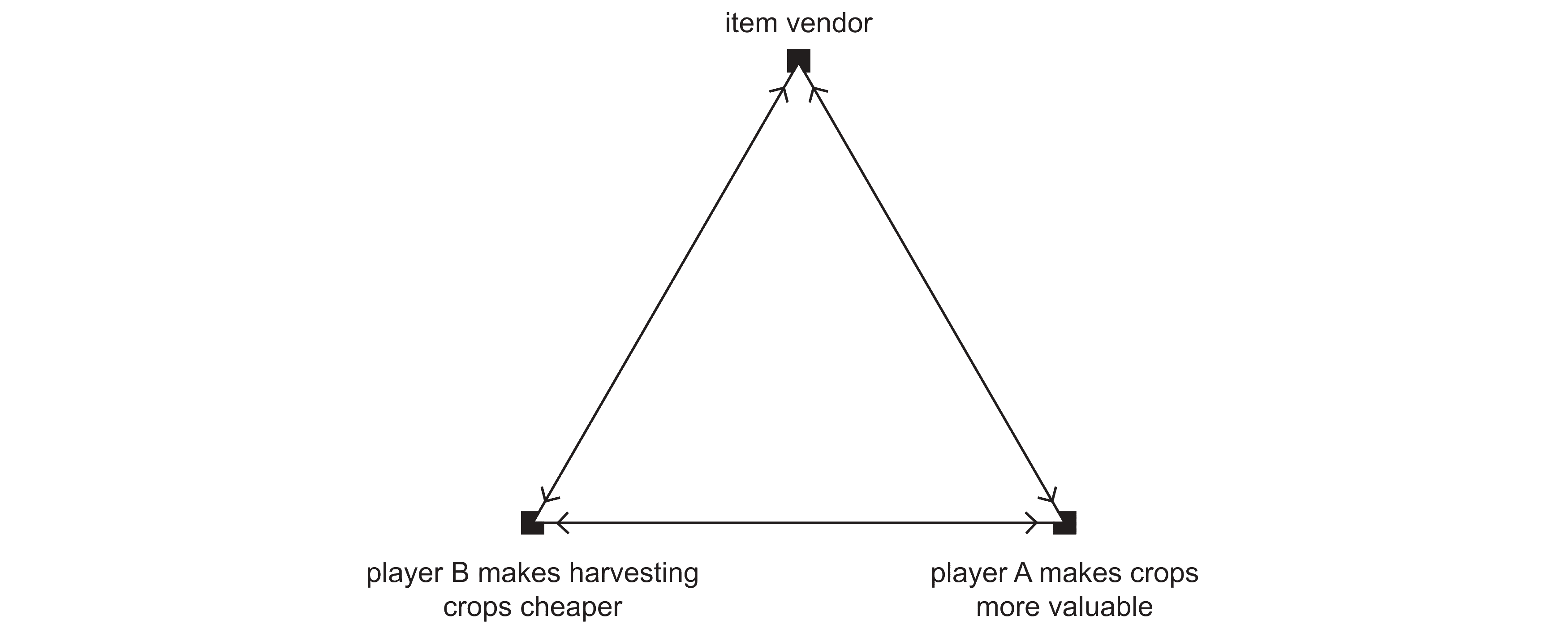How Worlds Absorb Novelty
What does it mean for something, like a world, to feel more “alive” than something else? Liveliness is a vague quality, but it is nevertheless clear that when people discuss the aliveness of a thing (like a room, painting, or party), they are considering an observable characteristic. A farmers’ market on a busy weekend feels more lively to us than a virtual meeting hosted in Meta’s Horizon Workrooms.
Liveliness also seems to be irreducible to the terms of biological life, which usually involve an entity capable of self-replication and converting thermal energy into work. While it is possible to view worlds from a biological perspective, this framing can be awkward when applied to things that are not organisms. Guerrilla warfare can be alive, but not always in the same way a gorilla is alive.
The most interesting worlds are evolved, not engineered. What if we think of liveliness as being about creating space for abundant novelty and surprise? A world is most alive when it has enough open-endedness for unexpected behavior to emerge in a bottom-up, democratic manner. A lively world can be a complex system, composed of many elements that interact with each other and influence each other’s progression.
It is easy, however, to create a system that is complex, yet not maximally lively. For example, a bad codebase is complex but also frustrating enough to discourage the maintenance of itself and the world it sustains. A world that is alive has rules for how relationships between entities can be continuously created and destroyed.
Onchain Games and Autonomous Worlds
It is the nature of an Autonomous World that anyone, not only its creators, can keep it alive as long as some invariants hold.1 Today, the most common manifestations of Autonomous Worlds are onchain games.
A popular viewpoint to adopt in the realm of onchain games is to magically assume that increasing agency—for example, allowing players to change the rules of the game or introduce new entities—will automatically make a world more alive as if by some natural consequence of the blockchain medium’s permissionlessness.
But in many cases, the players of a game are worse stewards of a world than its creators. Imagine an MMO game that has given players the ability to add any custom item with an associated custom behavior into the game. Giving anyone the ability to create any type of item means everyone will make themselves gods. Players might create extremely powerful swords or impenetrable armor. But eventually, things will converge to an “interestingness equilibrium” because every newly introduced object, like an invincible armor, also allows anyone to introduce a counter, like a sword that destroys an invincible armor.
This world starts lively but sinks lower on the liveliness spectrum until it is unable to surprise itself. Without formalized introduction rules, the relationships between entities in the world are left undefined and have a tendency to become meaningless.
Feedback Loops in Worlds
A lively world is an economy where the main currency is relationships. The most valuable relationship for encouraging liveliness is positive—where one party benefits from another without either being harmed.
Because new relationships can build on previous ones, all you need for liveliness—as continuous novelty and surprise—is a feedback loop:
- New information is introduced to the world. This can be a discovery, like a glitch in its physics, or intentionally created, like an item for accomplishing some goal.
- The new information disrupts relationships between entities. Existing entities might latch onto it, creating new connections and even breaking old ones.
- If the number of positive connections the new entity receives reaches critical mass, it is “memed into existence” as part of the world and can interact with new information in the next iteration of the loop. Otherwise, it is destroyed by competition.

Cooperation Emerges
We have described a general algorithm that describes how a world changes but have not yet defined exactly what it means for “relationships and connections to form or change.” What is the specific process through which the world evaluates whether or not it can assimilate a source of novelty? How does it transition to the next version of itself?
Let us reconsider our example MMO game from before and define a more structured way for relationships to form:
- Every newly introduced item can be destroyed by anyone. Destroying the creator also destroys the item.
- Destroyed items are expensive to rebuild.
- Each player can only introduce one item.
This creates an interface for destructive interactions—introducing competition into the world.
Imagine if a player introduces a machine that lets you detach and reattach arbitrary limbs. If the machine unlocks new feats of heroism and spawns entire industries where bodybuilders auction off their arms and engineers can replace your legs with rockets, the world will build castles to protect the machine. But if the machine suddenly forgets how to reattach limbs, assassination markets emerge to target its creator.
How does the three-step system apply here? Players introduce new information into the world in the form of the limb machine (Step 1). The machine then interacts with existing entities in the world (Step 2). Once enough positive relationships have been formed with it, such as the emergence of a market, it ingrains itself as part of the world and is less likely to be destroyed (Step 3).
This model implies that avoiding competition is the best way entities can ensure their continued participation in this world. Suppose Player A and Player B both decide to build hyper-efficient shovels that let them harvest resources much faster. Competition emerges if this resource is scarce. Given our rules, players could try to destroy each other to escape the loop. As competition implies a constant threat, it is hard to be selfish in this world.

The other way to escape the loop is to specialize and cooperate. For example, Player A builds a device that makes crops grow larger and works together with Player B, who keeps the hyper-efficient harvester. Cooperation can also take the form of composition, where relationships and ideas build on top of each other. This is most commonly seen in economic development, where new products or technologies are combinations of existing ones.

An item is more likely to maintain its existence when many positive links point to it. Cooperation improves each item’s (and its creators’) chances of survival by increasing the number of positive links each entity receives. Consequently, the world becomes less alive when items that originate many positive relationships are destroyed. An example from nature is the extinction of a keystone species in an environment.
Each world has its own “positive link evaluation process” that decides whether or not new information can be accepted. We can measure how well novelty incorporates itself into the world by how many positive loops—positive relationships between two entities in both directions—it creates. As long as the new information maximizes the number of positive loops it creates, there is less incentive for others to destroy it.
The drive to maximize loops means entities not only maintain positive links but also actively seek out new relationships that could be formed. The more positive links an entity already has, the more likely it is for newer entities to attach more links to it in the future. We can say the most lively worlds exhibit a semilattice structure. Christopher Alexander’s essay “A City is Not a Tree”* describes the semilattice as a connection pattern where all elements are deeply intertwined.2 Alexander argues that embodying this connection-maximizing structure in our cities creates the healthiest possible communities.
Systematic Worlding
When tasked with the goal of creating the most realistic and interesting simulation possible, there are two approaches at opposite ends of the ladder of abstraction:
- A symbolic approach, where every interaction and entity is defined by high-level concepts specified by humans. For example, nearly every video game.
- A physics approach, where interactions between individual base components are represented through low-level primitives, like cellular automata. For example, falling sand simulations.
Taking the concave disposition3 — a systematic approach to worlding4 — will not allow us to engineer a specific outcome, but it can help us answer questions about how the different components of a world might generally work together in the future. Questions like: “Under what conditions does cooperation develop?” can be answered without zooming in on the world’s implementation (physics) or zooming out on its anthropocentric biases (symbols).
You may discover that taking a systems - level view of everything makes it hard to find meaning. The heart is just a bunch of cells (muscle) that move a bunch of other cells (blood) through some more cells (arteries and veins). It does not care about the things we humans care about.
How do we understand the complexity that surrounds us? Traditionally, cultures use storytelling and narrative to derive meaning from within a world. The heart might be a bunch of cells, but it is also the engine that moves your arms when you go to hug your family.
Meaning-making happens by identifying a slice — a journey or story — within a world and giving participants the ability to progress within that slice. The more open-ended and surprising the world is, the more opportunities there are to find the most meaningful slice for yourself. Over time, the boundaries of the slice itself (and therefore the participants’ capabilities) can expand and shrink. Slices often grow into their own worlds that bump into each other as they move through even larger meta-worlds. The most lively worlds have plenty of room for many journeys.
The creator of a world should view it not as a bag of systems, but as a rich medium that supports curated interfaces for meaning. As more people attempt to make Autonomous Worlds a part of our lives, we have the opportunity to elevate them from being mere containers for MMOs and drive them towards embodying models for worlds worth living in.
Acknowledgements
This text was originally published in Autonomous Worlds N1, 2023.